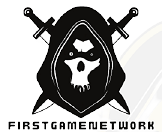Sheet metal machinery plays a crucial role in various industries, from automotive to construction, enabling the precise cutting, shaping, and forming of metal sheets. This article explores the tools, techniques, and innovations in sheet metal machinery, highlighting its significance and impact on modern manufacturing.
Essential Tools in Sheet Metal Machinery
Cutting Tools
Cutting is a fundamental process in sheet metal fabrication. Essential cutting tools include shears, laser cutters, and plasma cutters. Shears are ideal for straight cuts, while laser and plasma cutters offer precision for intricate shapes and patterns. Laser cutters use a kanttikone focused beam of light, providing high accuracy and clean edges, while plasma cutters utilize electrically conductive gas to cut through thick metals.
Forming Tools
Forming tools shape metal sheets without removing material. Key tools include press brakes, rollers, and stamping presses. Press brakes bend metal sheets into desired angles, rollers curve sheets, and stamping presses use dies to create specific shapes and patterns through high-pressure application.
Joining Tools
Joining tools are vital for assembling metal components. Spot welders, riveting machines, and adhesive applicators are commonly used. Spot welders fuse metal sheets at specific points, providing strong joints, while riveting machines use metal pins to join sheets. Adhesive applicators offer an alternative, especially for materials sensitive to heat.
Advanced Techniques in Sheet Metal Fabrication
CNC Technology
Computer Numerical Control (CNC) technology has revolutionized sheet metal fabrication. CNC machines offer unparalleled precision and efficiency, automating cutting, bending, and forming processes. Operators program these machines using CAD/CAM software, ensuring consistent and accurate production of complex designs.
Laser Cutting
Laser cutting technology provides exceptional accuracy and versatility. It allows for intricate designs and clean cuts, reducing the need for additional finishing processes. Laser cutting is particularly advantageous for prototypes and custom projects, where precision is paramount.
3D Metal Printing
3D metal printing, or additive manufacturing, is an emerging technique in sheet metal fabrication. It builds metal parts layer by layer, offering design flexibility and reducing material waste. This technology is ideal for creating complex geometries and customized components, expanding the possibilities of sheet metal applications.
Innovations in Sheet Metal Machinery
Automation and Robotics
Automation and robotics are transforming sheet metal fabrication, enhancing productivity and reducing labor costs. Automated systems handle repetitive tasks, such as loading and unloading materials, allowing human operators to focus on complex operations. Robotics also improve safety by reducing the risk of injury in hazardous environments.
Smart Manufacturing
Smart manufacturing integrates advanced technologies, such as the Internet of Things (IoT) and artificial intelligence (AI), into sheet metal fabrication. IoT devices monitor machine performance in real-time, predicting maintenance needs and reducing downtime. AI algorithms optimize production processes, improving efficiency and product quality.
Sheet metal machinery is at the forefront of modern manufacturing, combining traditional techniques with cutting-edge technology. The tools and techniques used in sheet metal fabrication are essential for producing high-quality metal components across various industries. As innovations continue to emerge, the future of sheet metal machinery promises even greater precision, efficiency, and versatility, driving progress in manufacturing and beyond.

